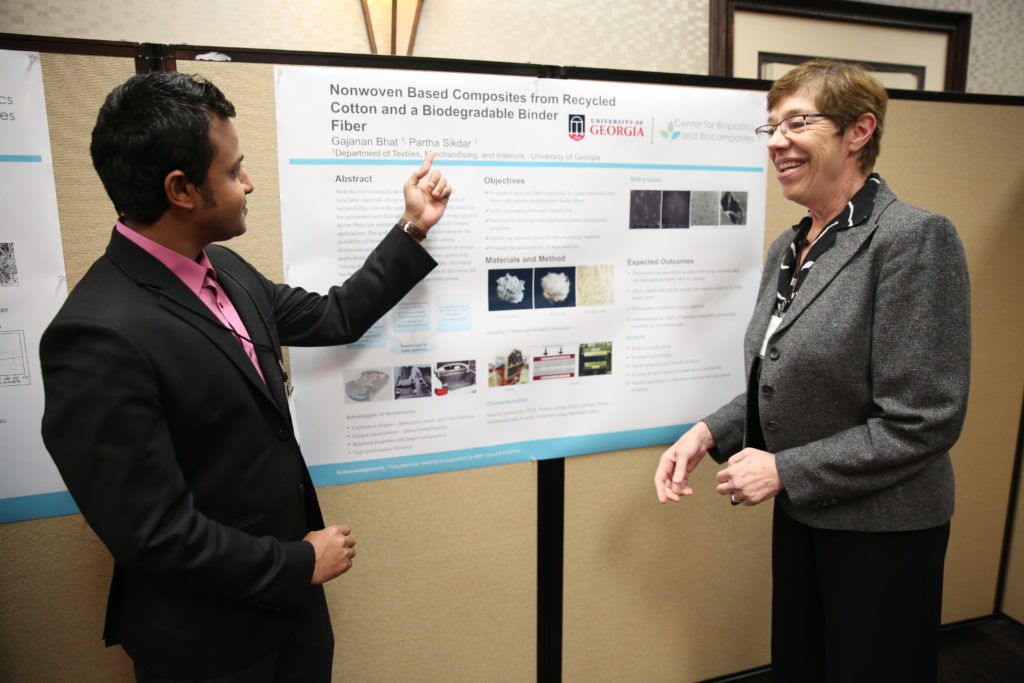Demonstrating UGA’s broad expertise in polymer science, biochemical engineering, textiles and plant science, faculty members representing the New Materials Institute recently presented a range of project ideas as part of the NMI’s pitch to become a site for the Center for Bioplastics and Biocomposites, known as CB2.
If approved this fall, the NMI will become the center’s third site, joining Iowa State University and Washington State University, which formed CB2 three years ago as an Industry-University Cooperative Research Center, a program run by the National Science Foundation. The 10 project pitches were presented at a site planning meeting attended by industry representatives from 20 companies, the NSF and CB2.
“At Georgia, we are firm believers that it’s important for us to collaborate with industry partners, who are critically important to ensuring the widespread adoption of faculty inventions,” said Provost Pamela Whitten in her welcome address.
The NMI team will use the feedback from this planning meeting to shape its full NSF proposal, which will also require letters of commitment from industry partners.
The IUCRC program benefits industry and academia in several key ways. Industry members gain access to cutting-edge research, shared intellectual property, ongoing training and continuing education, and the ability to leverage investment opportunities. Universities benefit from knowing exactly what industry expects from a project through direct mentorship, which leads to long-term relationships with industry partners, future intellectual property and the direct exposure of students to potential employers.
In his comments to the group, NSF Program Manager Prakash Balan said that 30 percent of students who work on IUCRC projects are hired by an industry partner directly involved in their work. Industry partners pay annual membership fees to the center, 100 percent of which are used to fund projects. CB2 currently has more than 30 industry partners including Ford, Hyundai, John Deere, 3M, Myriant and ADM.
“Along with all of the great ideas and projects that come from our talented faculty, the NMI will also add value to CB2 by broadening the research focus to include sustainable packaging and bring industry partners that represent the Southeast region,” said Jason Locklin, director of the NMI and an associate professor of chemistry and biochemical engineering.
The planning meeting presentations were made by faculty from the Franklin College, the colleges of engineering and family and consumer sciences and the Complex Carbohydrate Research Center. Students also attended the meeting and presented 20 posters on related research work, further illustrating the scope of knowledge that UGA can add to CB2.
In his send-off message to the attendees, Vice President for Research David Lee pointed out that UGA already is a member of the IUCRC’s Center for Advanced Forestry Systems and that the university welcomes a future with CB2.
“Collaborating with industry is key to our land-grant mission of performing research that ultimately improves the lives of people everywhere, from Georgia and across the globe,” said Lee. “Having NMI as a site in CB2 will facilitate our interactions with industry, accelerate our innovations in the critical area of sustainable and green materials and encourage economic development and job growth.”
The CB2 planning meeting was supported by NSF grant #1738734.
